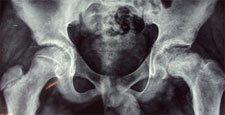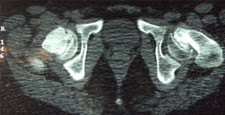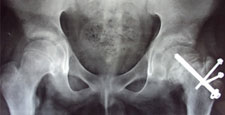Patient Information: Slipped Capital Femroal Epiphysis (SCFE)
SCFE is a common hip pathology seen more frequently in boys than girls during the adolescent growth spurt. There is a mechanical weakening between the met- aphyses of the femoral neck and head causing the epiphysis to slip posteriorly.
It is more common in children with endocrine disorders, with metabolic bone disease and renal disorders. Children with bilateral slips must be evaluated for thyroid and, growth hormone deficiency and renal causes SCFE may vary from mild (early) slip to moderate and complete slip depending on the extent of displacement of epiphysis. SCFE can also be classified as Stable and Unstable slips depending on the ability of the child to bear weight on the affected leg.
Any acute, and unstable SCFE requires emergent treatment. Stable slips also need to pinned on an elective basis. Untreated or unreduced SCFE can lead to Avascular Necrosis of the epiphysis, chondrolysis and Femoral-Acetabular impingment leading to early hip arthritis. Severe Slip may required open reduction using the Anterior or Watson-Jones Approach or the Safe-Surgical Hip (GANZ) Dislocation approach.
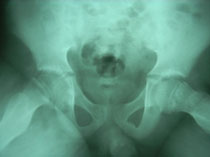 11 year old boy with right hip pain & limp. AP
11 year old boy with right hip pain & limp. AP
and Lateral x-rays showing "Slip" of
Epiphysis The traversing the Klien line across the
The traversing the Klien line across the
femoral neck should abut on the head. Note
the sign on the right side.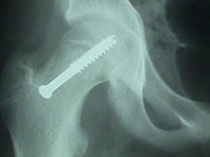 In early slip, in-situ fixation
In early slip, in-situ fixation
with a single screw across
the physis is sufficient.
SCFE treated with the Ganz Approach
Severe slip in a 11 year old child treated with the Ganz Safe Surgical Hip Dislocation approach.


